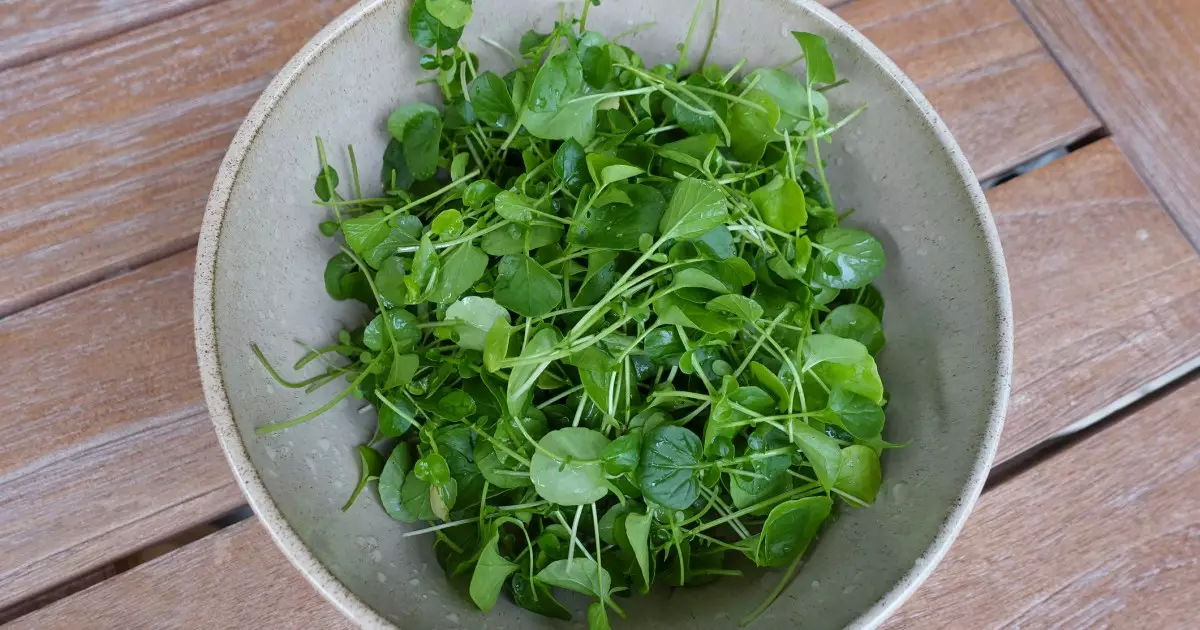Watercress, known scientifically as Nasturtium officinale, is a well-regarded leafy green that has found its way into various culinary dishes due to its peppery flavor and nutritional benefits. However, when it comes to our canine companions, this seemingly innocuous plant can present an array of risks that every dog owner should be aware of. While watercress isn’t classified as highly toxic, its potential to cause digestive distress in dogs cannot be overlooked. It can lead to gastrointestinal disturbances, such as nausea, vomiting, and diarrhea, which can severely compromise a dog’s health if not addressed swiftly.
A Delicate Digestive System
Dogs have a unique digestive system that is fundamentally different from human digestion. Their gut is designed to process high-protein diets with minimal plant material. Watercress, with its fibrous composition, does not align well with this digestive design. Even small amounts can provoke a significant reaction in dogs, particularly those who may already have sensitive stomachs or pre-existing health conditions. This makes it essential for dog owners to understand that even if a particular food is safe for humans, it doesn’t necessarily translate to safety for our furry friends.
Contaminants and Environmental Hazards
Compounding the dangers of watercress is its growth environment. Typically found in freshwater settings, watercress can be susceptible to contamination from various pathogens, including bacteria and parasites like liver flukes. For dogs who consume wild watercress, there’s an additional layer of risk presented by harmful toxins that can permeate the plant. The aquatic nature of watercress means it can absorb these dangerous substances, posing a hazard not just from the plant itself but from its environment. In some regions, bodies of water may harbor toxic organisms such as blue-green algae, a genuine threat that can lead to severe health issues, including death.
The Warning Signs of Watercress Ingestion
It’s critical for dog owners to be vigilant and responsive if they suspect their pet has ingested watercress. Immediate veterinary care is imperative as it can mitigate further health complications. Symptoms such as vomiting, diarrhea, and lethargy should never be ignored. Furthermore, dogs with compromised immune systems are at even greater risk, as their bodies might not effectively handle the stress of digestive disturbances. Timely intervention can make a substantial difference in recovery outcomes.
Keeping Watercress Out of Reach
If you enjoy using watercress in your culinary endeavors, ensure that it is stored safely away from your dog’s reach. Dogs are naturally curious and can ferret out food that is left unattended or improperly secured. Furthermore, be mindful of leftovers that may contain watercress. Sharing food with your pet is a common bonding activity, but it’s essential to ensure that those offerings are safe. A single moment of neglect can lead to significant health repercussions for your dog.
The Importance of Veterinary Guidance
When in doubt about any food item and its safety for your dog, consulting a veterinarian is always a prudent course of action. Your vet can provide essential insights not only about watercress but also about a variety of other food items that may pose risks to your dog’s well-being. Building a rapport with a knowledgeable veterinarian can also empower you to make the best dietary choices for your furry friend.
In our quest to give our pets a delightful life, understanding the complexities and potential hazards associated with what they consume is vital. Watercress may have its place on our plates, but when it comes to our dogs, it’s best left untouched.

